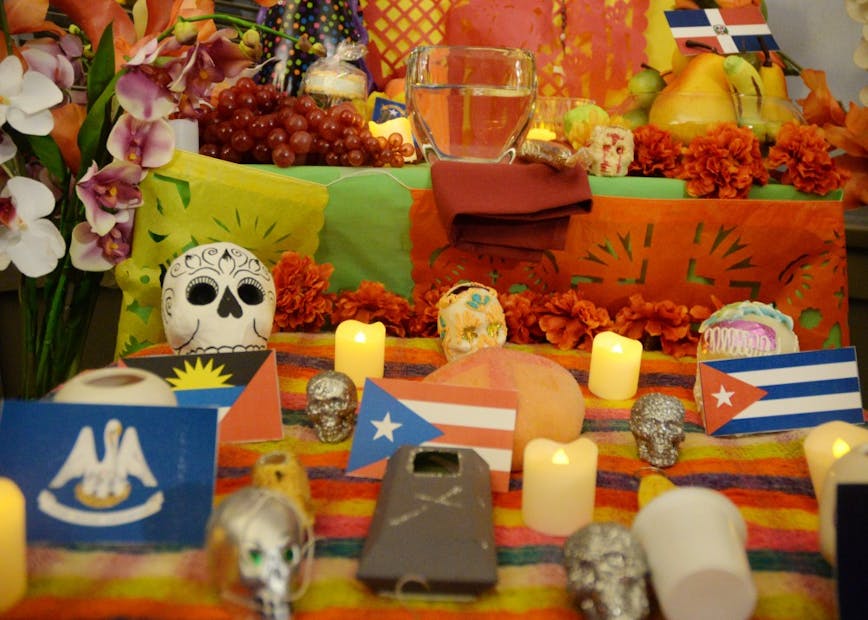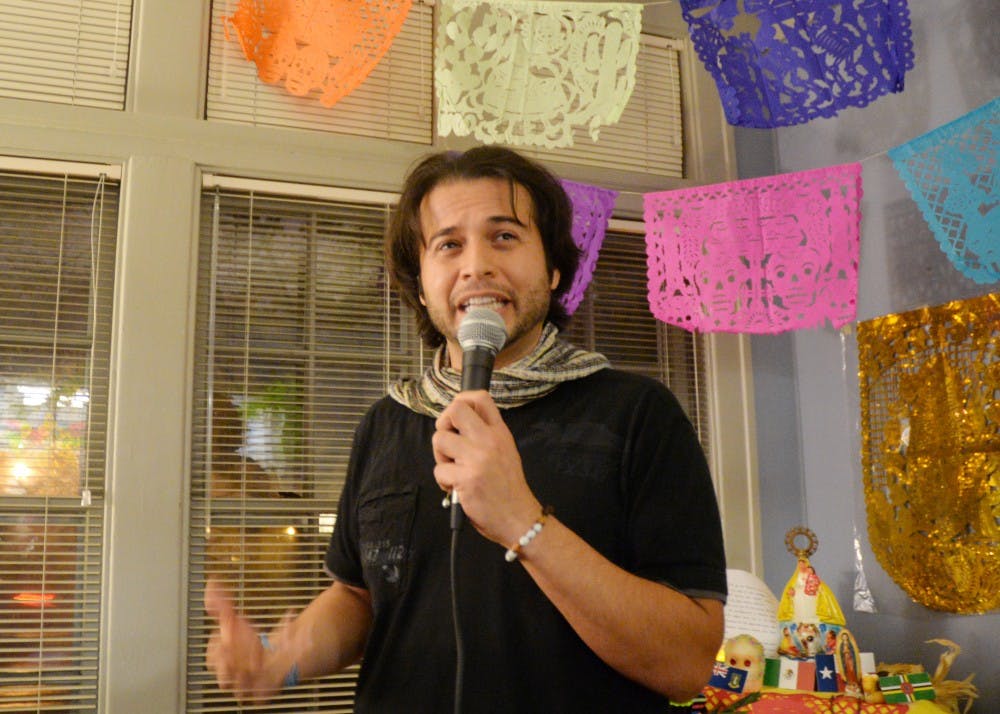The first floor of the La Casa Latino Cultural Center flooded with chatter and the smell of tamales and pan muerto, a sweet bread baked as part of the Día de los Muertos tradition.
Students with faces painted like decorative skulls sat next to an elaborate altar filled with candles, fruit and items dedicated to loved ones who had died.
Members of La Casa spent hours decorating the house as part of their Día de los Muertos celebration Wednesday night. Meaning Day of the Dead, Día de los Muertos is a holiday primarily celebrated in Mexico that centers around family and friends gathering together to honor their deceased loved ones and support their spiritual journey.
“It’s about remembering the people who came before us,” La Casa member Gonzalo Corral said. “It’s an important celebration because sometimes we forget our roots.”
Some visitors were not entirely familiar with the celebrations of Día de los Muertos. Some had never celebrated it until that night.

For those who were new to the celebration, La Casa member Eric César Morales offered a simple explanation.
“How many times do you die?” he asked the audience.
The answer was three times.
“The first is when your body dies, the second is when you’re buried, and the third is when you’re forgotten,” Morales said.
The goal of Día de los Muertos is to never have anyone reach their third death where they are forgotten, Morales said.
People often place decorated altars in their homes to display items honoring loved one, Corral said. They also typically include items that are symbols of air, fire, earth and water. Candles, for example, can represent fire, and fruit can represent earth.
Corral said that his favorite part of the day was getting together with friends to build the altar at La Casa, which paid homage particularly to the lives lost in recent natural disasters. On top of the altar were miniature flags of the areas affected, such as Mexico and Puerto Rico.
There was also an altar set up in the First Nations Educational and Cultural Center where churros and hot chocolate were sold. The profits will be donated to victims of the hurricanes.
The LGBTQ+ Culture Center and the Canterbury House also had their own celebrations with crafts and altars.
Students and staff at La Casa were encouraged to place their own items on the altar in the house to honor their loved ones who have died. Corral had added a K-Cup to remember his grandmother, who loved coffee.
While some stood and admired the altar, others waited in a line snaking through the house and out the door to get a plate of food.Sophomore Johana Andrade said that she looked forward to the pan muerto the most.
Pan muerto is baked in the weeks leading up to Día de los Muertos and is eaten together to symbolically absorb the essence of the loved ones honored, Morales said.
Although Andrade’s family is from El Salvador, a country that does not typically celebrate Día de los Muertos, she said she was still able to connect the experience to her own life.
“My favorite part is the food and coffee because it reminds me of home,” she said.
In addition to eating the food prepared by La Casa, all were encouraged to make or buy a gift of their own and set it out in their homes to give thanks to their loved ones who had died.
“It’s a way to not only keep our loved ones alive in our hearts, but to also keep indigenous tradition alive,” Morales said.




